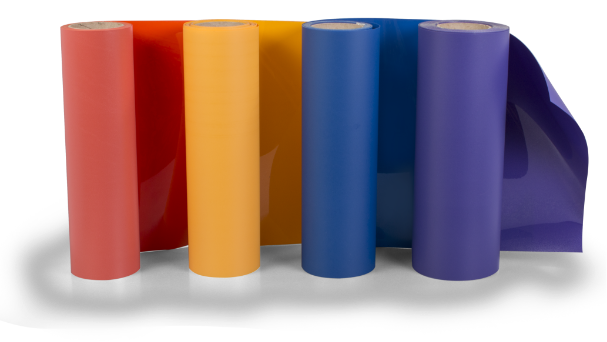
There’s always room for improvement when it comes to customer service. Learn how the C.A.P.S. formula can provide a guideline to success.
If you are looking for ways to offer a better customer service experience, you are on the right track–there’s always room for improvement, right? Even if you are currently known for your excellent service, there’s always a competitor waiting for an opening. If you aren’t sure which areas to improve upon, this formula, which we call C.A.P.S., should be a good starting point.
THE CUSTOMER SERVICE SUCCESS FORMULA WE CALL C.A.P.S.
C is for convenient
We live in a convenience-oriented society—so the first aspect of customer service is making it as convenient as possible for the customer to patronize your business. Again, this may sound simple, but the “C” part of our C.A.P.S. definition is actually more elaborate.
If you own a retail location, it has to be convenient for the customer to get to you – to find you, to park, to enter your business. Can the person who answers your phone give customers clear directions on how to reach your store? Is your front sign clearly visible from the road? Is your parking lot well-tended, with easy access?
Another part of being convenient is maintaining hours that are adequate for servicing your customers. A friend of mine in California recently told me that he switched to a Japanese bank. When I asked why, he replied, “Because they’re open the hours I am – evenings and Saturdays.”
If you’re a business that sells merchandise over the phone, it should be convenient for the customer to call you and place an order. Convenient is having a system that immediately routes customers to a qualified order taker, with minimal or – preferable – no waiting. Inconvenient is putting the customer on hold, or bouncing them around from person to person.
But “convenient” goes well beyond the initial customer selling transaction. It’s a follow-through process in which you and your employees do everything possible to make it easy for the customer to get satisfaction from the products or services you sell.
Your packaging, for example, should be convenient, so that the product gets to the customer in a usable form, without having to be uncurled, unglued, or otherwise hassled with. No matter what you sell, you should make it convenient for the customer to use your products. If it’s a mechanical part or machine, for example, include directions on how to install, operate or maintain it.
In cases where the customer isn’t completely satisfied, being convenient is having a policy on returns and exchanges that is clearly stated and easy to follow. The key phrase here is “having a policy.” Whether that policy is for or against returns, it should be something that everybody in your organization is familiar with. Too many businesses have no policy on returns, or if they do, the employees aren’t aware of it – so the customer gets passed around from department to department, adding frustration to his initial dissatisfaction.
Similarly, when a customer calls with a problem or complaint, the person who answers the phone should have the authority to give immediate assistance. We’ve all had experiences where we’ve explained a problem to an employee, only to be directed to a second person, and a third, forcing us to repeat our story again and again. Now, that’s inconvenient. The successful store is the one in which the first employee that has customer contact has the authority to act upon the complaint.
Anybody can be convenient for a day or a week. But the trick is to do it – without letting up – from every aspect of your organization for 365 days a year.
A is for Alternative
The second letter in our C.A.P.S. customer service acronym stands for alternatives. All customers like to have a choice when buying merchandise – so whether you’re selling toasters or T-shirts, you’ve got to offer more than just one alternative or design. It’s a proven fact that if you want somebody to buy a $15 toaster, show them a $10 and $25 toaster. If you’re a T-shirt shop, heat printer or custom garment decorator, show the customer that there are three different ways to do the design.
But you also have to be careful that your alternatives don’t confuse the customer. We know one shop that does an outstanding job of presenting alternatives, while still making it very easy for the customer to buy. This shop sells an enormous amount of custom jerseys, and we visited them to find out why. It turned out that what they were doing was offering different “price point packages” for team customers. For example, they offered one shirt for $20 that had the player’s name, number and team logo on the front of one color. Then they had another shirt for $25 with the number and logo on the front in two colors, and $30 and $45 shirts that were more elaborate still. All of the shirts were on display, so the alternatives were quickly visible to the customer. All the customer had to do was multiply the price of the shirt he wanted by the number of players on his team – he didn’t have to think, really. He had many options to choose from, but they were simple to understand.
When you present several different alternatives in a readily visible manner like this, not only are you doing your customers a favor, you’re also doing a great service to your store’s bottom line – because you’re increasing the likelihood that the customer will trade up to a more expensive, profitable product.
P is for Price
The price a store charges for its goods or products is another important dimension of customer service. In today’s economy, especially, everybody’s concerned with getting the most for their money. Therefore, it’s crucial that you price your goods to be competitive and offer the customer a good value.
The key words here are “competitive” and “value.” You don’t necessarily have to be the cheapest in your market. Of course, you can’t be overpriced either, but if you have the customer service part of it together, you’re providing a value-added commodity, so you can charge a little more and customers will gladly pay. In fact, studies have shown that when a business hangs up customer service and relies too heavily on low prices, the odds are that it won’t succeed.
S is for Speed
Last – but not least – in our C.A.P.S. acronym is speed. Customers everywhere today are asking, “How fast can I get it?” As you know, Amazon, Zappos and other internet companies have convinced most consumers that overnight service is the best service. This won’t always work for your custom printing business but you must be aware of the “need for speed.”
Our industry has a decided advantage when it comes to offering speed: with a heat press, we can provide instant lettering and instant transfers. But too many shops fail to capitalize on this advantage, and tell their customers, “Come back some other time, or sorry, it will take two weeks to do that.”
Why not, instead say to the customer, “Do you have some other shopping you can do,” or “Take a walk around the mall – it’ll be ready in half an hour.” Not only will such instant service result in a satisfied customer and good word-of-mouth advertising, you’ll also be able to charge more for your products. A reminder: speed also means being quick to respond to customers’ requests for information over the phone and in handling any problems or complaints (as we mentioned in our “C” heading). If it isn’t speedy make sure the customer’s aware that you’re aware that they’re waiting.
As a final note, I’d like to emphasize that anyone can start a pro-active customer service program, but it takes a tremendous amount of pressure from management to keep it happening day in and day out, from the first customer in the morning to the last customer at night. Make a game of it among your employees – so that it actually becomes a contest to see how much they can blow customers’ minds by providing them with excellent service and treating them like human beings.


